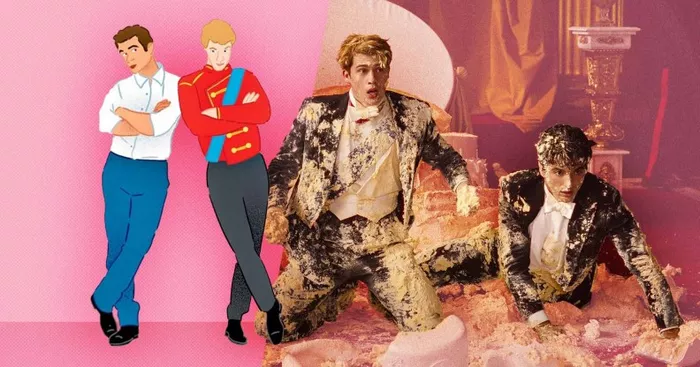The transition from book to film is a delicate dance, with filmmakers striving to capture the essence of the source material while making necessary adjustments to suit the cinematic medium. “Red, White & Royal Blue,” a beloved novel by Casey McQuiston, recently made its way to the silver screen, delighting fans with its heartfelt and romantic storyline. However, as is often the case, certain changes were made during the adaptation process. The director of the film has shed light on the most significant alterations between the movie and the book, providing insight into the creative decisions that shaped this charming on-screen love story.
1. Condensing the Narrative: The Challenge of Adaptation
One of the most common challenges in adapting a book into a movie is condensing the narrative. Books can explore intricate details, inner thoughts, and multiple subplots that might be challenging to replicate in the limited time frame of a film. The director of “Red, White & Royal Blue” had to make judicious decisions about which elements to streamline while ensuring that the core essence of the story remained intact.
2. Pacing and Focusing on Key Moments
In a novel, the pacing can vary, allowing readers to savor each moment and dive deep into character development. The film, however, demands a more focused approach. The director discussed how they chose to emphasize key moments that highlight the central relationship between Alex and Henry, the two main characters. By carefully selecting pivotal scenes and interactions, the film captures the emotional journey of their romance while maintaining a brisk pacing that keeps viewers engaged.
3. Visual Storytelling: Showcasing Emotions
While the book relies on written descriptions to convey emotions, the film leverages visual storytelling. The director shared insights into how they used cinematography, facial expressions, and body language to express the feelings of the characters. This shift from a predominantly internal emotional experience to an external, visible portrayal allowed the film to convey the chemistry and vulnerability between Alex and Henry, intensifying the impact of their love story on the big screen.
4. Adaptation Challenges: Navigating Subplots
Books often feature subplots that contribute to the richness of the narrative. In adapting “Red, White & Royal Blue,” the director addressed the challenge of navigating these subplots within the confines of a film’s runtime. Some subplots had to be trimmed or modified to maintain a coherent and focused storyline. While this might disappoint fans of specific subplots from the book, the director’s goal was to ensure that the central romance remained the heart of the film.
5. The Art of Casting: Bringing Characters to Life
Casting is a critical aspect of any adaptation, and the director provided insight into the careful selection process for the film’s cast. The goal was not only to find actors who resembled the characters from the book but also to capture the essence and chemistry that fans loved. The director discussed how the cast’s performances contributed to the film’s authenticity, making the characters feel genuine and relatable, just as they were on the pages of the book.
6. Creating a Cinematic Experience
Ultimately, the director’s primary goal was to create a cinematic experience that would resonate with both fans of the book and new audiences. They aimed to capture the spirit of “Red, White & Royal Blue” while embracing the unique storytelling opportunities that film provides. The director’s insights reveal the careful balance between staying true to the source material and utilizing the creative freedom that adaptation allows.
Conclusion: An Evolution of a Beloved Story
The process of adapting a beloved book into a film is a complex endeavor, requiring creative decision-making and a deep understanding of the source material. The director of “Red, White & Royal Blue” has shared valuable insights into the challenges and choices that shaped the film. While certain changes were necessary for the transition from page to screen, the heart of the story—the romance, the chemistry, and the charm—remains intact, ensuring that both book enthusiasts and moviegoers can enjoy a delightful journey through the love story of Alex and Henry.
RELEATED READING:
-
Zachary Levi, the Shazam 2 Star, Takes a Stand Against Hollywood’s Looming ‘Garbage’
-
The Ultimate Action Movie Collection on Paramount+
-
Gal Gadot’s Dedication: The Journey to Her Snow White Audition
-
Uma Thurman and Maya Hawke: A Dynamic Duo in ‘The Kill Room
-
The Bold Farewell: Ilsa Faust’s Demise in Mission: Impossible — Dead Reckoning

